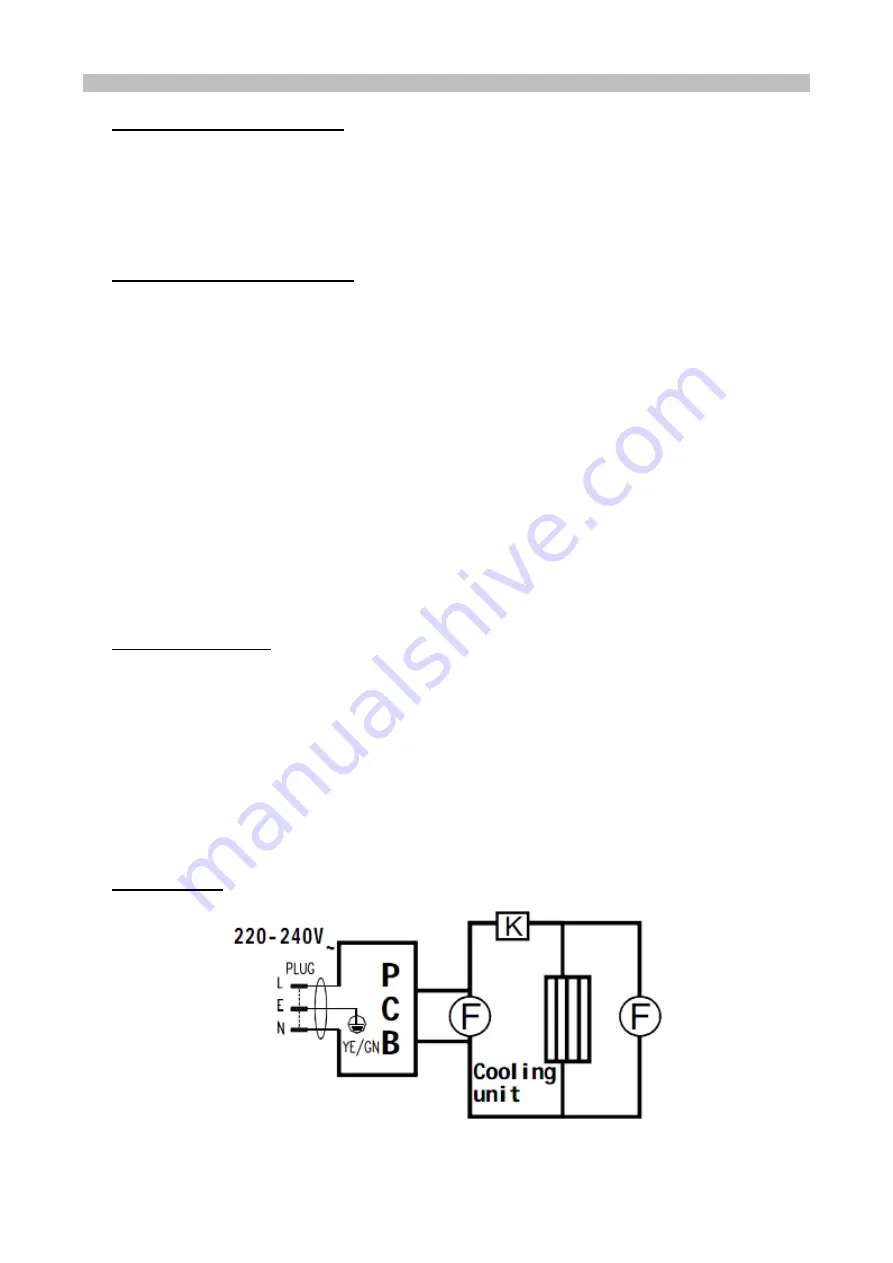
Installation Instructions
Before Usinq Your Wine Chiller
Remove the exterior and interior packing.
Check to be sure you have all of the following parts:
(4) Shelves
(1) Instruction manual
Clean the interior surface with lukewarm water using a soft cloth.
Installation of Your Wine Chiller
This Wine Chiller is designed to be free standing installation only, and should not be recessed or built-in
(Fully recessed).
Place your Wine Chiller on a surface that is strong enough to support it when it is fully loaded.
Allow 5 inches of space between the back and sides of the wine chiller, which allows the proper air
circulation to cool the heat sink.
Locate the Wine Chiller away from direct sunlight and sources of heat (stove, heater, radiator, etc.).
Direct sunlight may affect the acrylic coating and heat sources may increase electrical consumption.
Extreme cold ambient temperatures may also cause the unit not to perform properly
This Wine Chiller uses superconductor refrigeration technology (no compressor) and is not designed for
storage in hot areas like garages, warehouses or outdoors since it is designed to operate at a maximum
of 30 degrees below the ambient temperature.
Avoid locating the unit in moist areas.
Plug the Wine Chiller into an exclusive, properly installed-grounded wall outlet. Do not under any
circumstances cut or remove the third (ground) prong from the power cord. Any questions concerning
power and/or grounding should be directed toward a certified electrician or an authorized service center.
After plugging the Wine Chiller into a wall outlet, allow the unit to cool down for 2-3 hours before
placing any items in the compartment.
Electrical Connection
This appliance should be properly grounded for your safety. The power cord of this appliance is equipped
with a two-prong plug which mates with standard wall outlets to minimize the possibility of electrical shock.
The cord should be secured behind the appliance and not left exposed or dangling to prevent accidental
injury. The appliance should always be plugged into its own individual electrical outlet which has a voltage
rating that matches the rating label on the appliance. This provides the best performance and also prevent
overloading house wiring circuits that could cause a fire hazard from overheated. Never unplug the
appliance by pulling the power cord. Always grip the plug firmly and pull straight out from the receptacle.
Repair or replace immediately all power cords that have become frayed or otherwise damaged. Do not use a
cord that shows cracks or abrasion damage along its length or at either end. When moving the appliance, be
careful not to damage the power cord.
Wiring Diagram






























